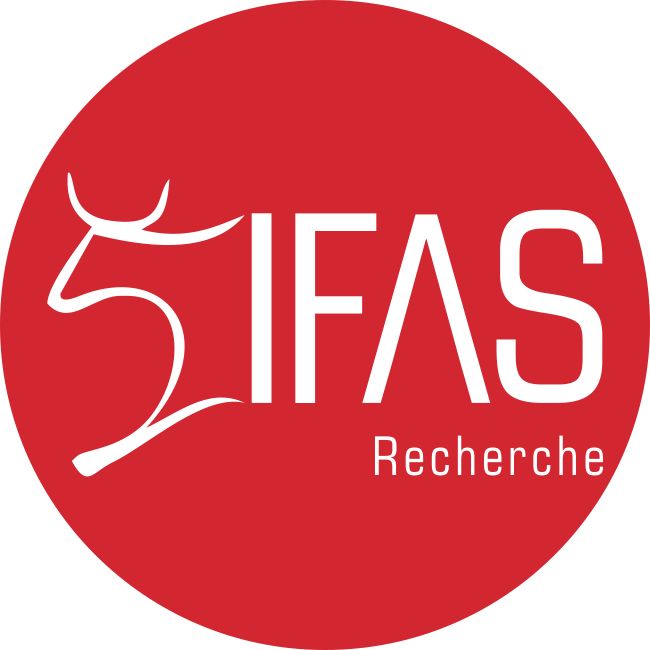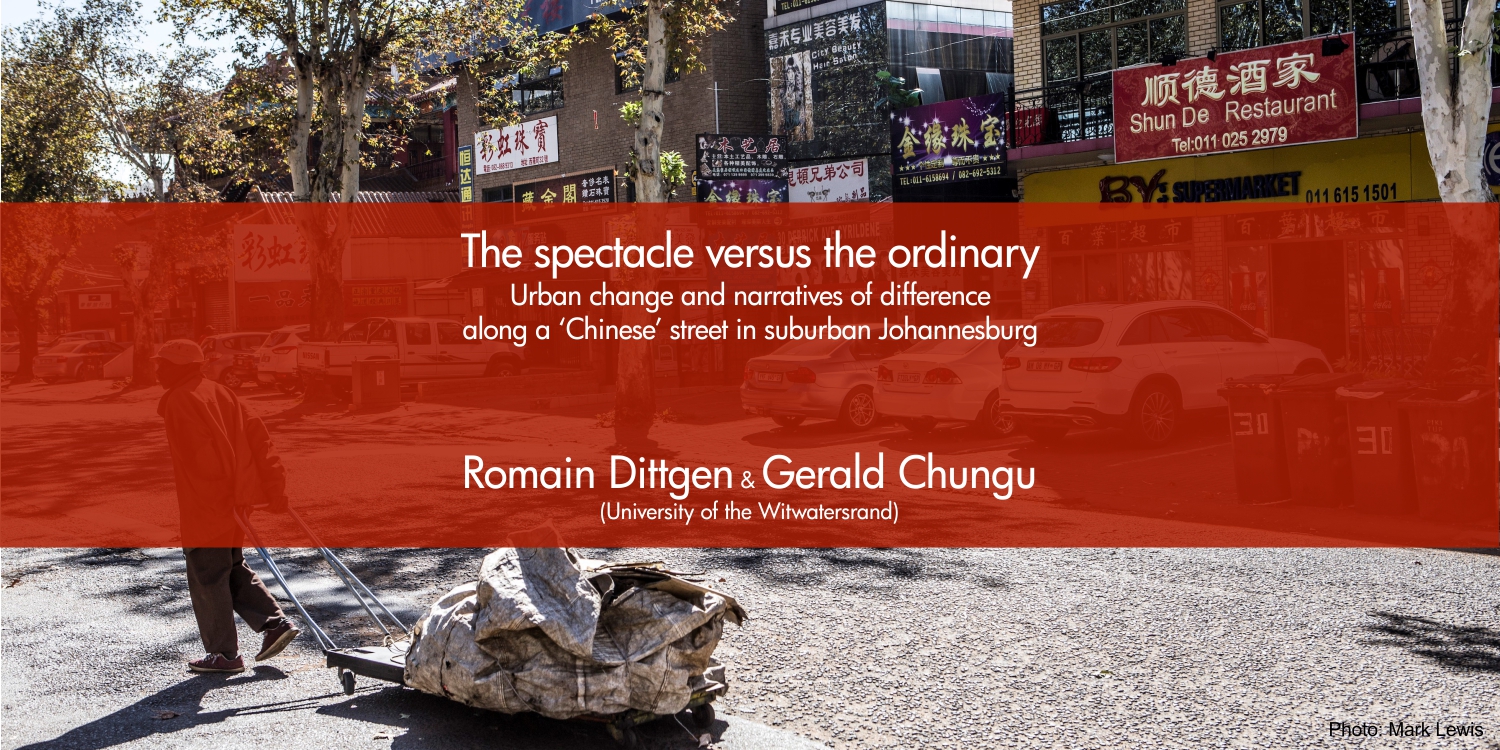The spectacle versus the ordinary
Urban change and narratives of difference along a ‘Chinese’ street in suburban Johannesburg
A joint seminar IFAS-Recherche / University of the Witwatersrand by Romain Dittgen & Gerald Chungu
1
Tuesday 6 November 2018
12:30 | African Centre for Migration and Society (ACMS) – University of the Witwatersrand
ACMS Seminar Room 2163, South East Wing, Second Floor, Solomon Mhlangu, East Campus
> RSVP
Derrick Avenue in Cyrildene, a suburb in the eastern parts of the city, is the closest one can get to a clichéd Chinese (street life) atmosphere in Johannesburg. With its wide array of restaurants, businesses and significant numbers of Chinese residents, customers and shopkeepers, this activity node sparks imaginaries of a spatialised elsewhere while standing in sharp contrast to the surrounding, mostly residential, neighbourhood. Owing to the prevalence of visible Chinese markers and its demographics, this street has mainly been viewed as exceptional and different, contributing to divorcing Derrick Avenue from the rest of the city. Yet, at the same time and irrespective of its Chinese qualities, it also points to a number of urban dynamics that characterise Johannesburg as a whole, whether in terms of challenges or opportunities. If Derrick Avenue conveys the image of a disorderly strip with its over-crowding, informality and lacking urban management, at the same time the clustering of different functions epitomises the sort of compact, dense and mixed-use urban environment that is envisioned by the local administration at a wider metropolitan level.
We seek to understand how these specific characteristics of a lived or constructed differentiation relate to geographies of the ordinary. Due to Chinese layers being added on top of a pre-existing urban fabric, the transformations occurring in this suburb, both in terms of the built environment and ways of living, echo changes happening elsewhere. Consequently, we challenge tropes that tend to qualify this section of Cyrildene merely as an ethnic enclave or ethnoburb, and see existing land-uses and forms of (compact) co-existence as indicative of normal urban shifts in various parts of the city. By focusing on the recent public participation process linked to the Cyrildene Precinct Plan as well as on the built environment along Derrick Avenue, we explore how narratives of difference and othering are articulated.
Romain Dittgen (ACMS / University of the Witwatersrand)
Romain is a Human Geographer holding a PhD from the University of Paris 1 Panthéon-Sorbonne. He is currently a Postdoctoral fellow (‘Life in the City’ Research Grant), jointly hosted by the ACMS and the South African Research Chair in Spatial Analysis & City Planning at the University of the Witwatersrand, Johannesburg. In his research, often comparative, he has mostly been interested in studying the effects of various forms of capital on societies in Africa, with a particular focus on the spatial dynamics of Chinese actors.
Gerald Chungu (School of Architecture & Planning / University of the Witwatersrand)
Gerald is an Architect and Urban Designer based in the school of architecture and planning at the University of the Witwatersrand in Johannesburg, South Africa. His work has centered around issues of sustainability, non-formal and hybrid urbanism and most recently on the Chinese influences in shaping the built environment in urban African cities. Gerald combines academic work with architectural and urban design practice and spent 12 years working in Shanghai as an Architect & Urban Designer. He studied Architecture at Copperbelt University, Urban Design at Tongji University, Shanghai and obtained a PhD in Urbanism from University of Venice – IUAV in Italy.

